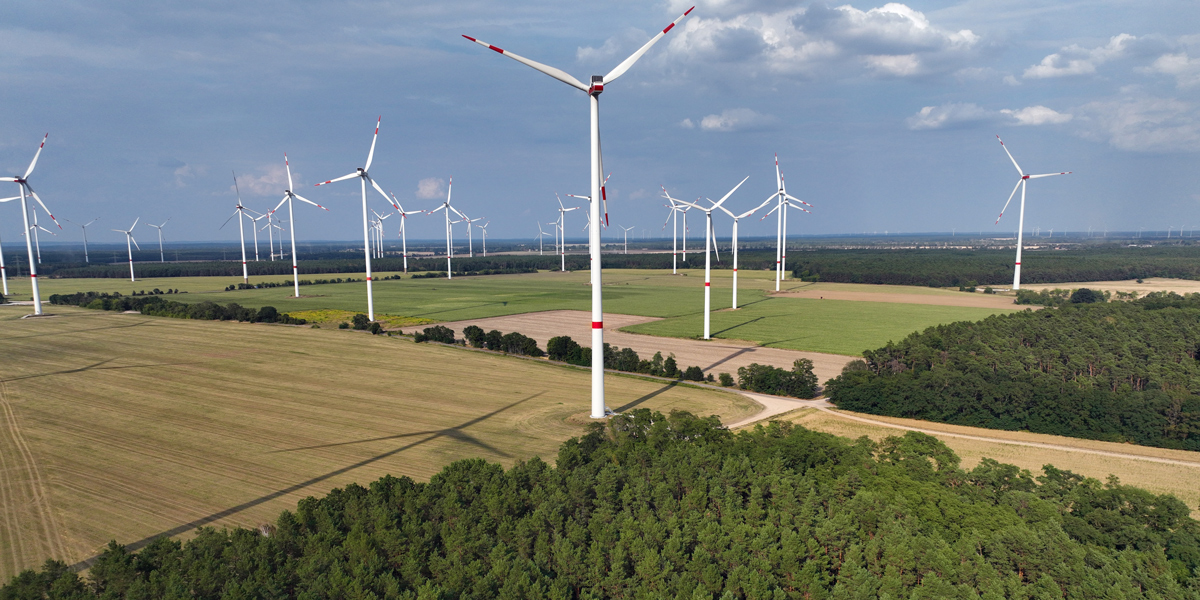The Lusatian energy company LEAG submitted the permit application for four wind turbines in the northeastern fringe area of Cottbus Ostsee to the Brandenburg State Office for the Environment on July 22, 2022. The application was prepared together with the project developer EP New Energies GmbH (EPNE). With a total capacity of 24 MW, the Cottbus Ost wind farm is to make an important contribution to the energy concept of the CO2-neutral Cottbus East model region, which also includes the planned floating PV plant and the lake thermal plant. In addition, the project will also generate regional green power for the first H2 filling station Lausitz in Cottbus for public transport.
The approval procedure is being conducted in accordance with the Federal Immission Control Act (BImSchG) with public participation and an environmental impact assessment. The application comprises around 1800 pages, on which the project is described in detail and the relevant factors influencing the environment and the surrounding communities are examined in detail. This includes topics such as noise, shadow flicker, species protection and a whole range of other technical, nature conservation and planning aspects.
“We have committed ourselves to the joint development of the ‘Cottbus Ostsee Model Region’ with the city of Cottbus and the BTU Cottbus-Senftenberg against the backdrop of the structural change processes to be managed. The establishment and use of renewable energies such as the planned floating PV plant, a sea thermal plant or a wind power project has been recognized by all partners as a key location factor,” explains LEAG CEO Thorsten Kramer. “With this project, we are once again one step closer to our goal of building a CO2-neutral port district on Cottbus Ostsee.”
“Our aspiration as the city of Cottbus/Chóśebuz is to develop an innovative and sustainable harbor quarter that can become a real laboratory for the energy transition under the aspects of CO2 neutrality and climate justice. The use of the resource wind at the future Baltic Sea is obvious, wind turbines already characterize the lake scenery and it complements the previous plans to generate renewable energy from solar and sea thermal plants. Only by applying a variety of renewable forms of technology will we be able to meet the upcoming challenges in urban energy supply,” said Stefan Korb, head of the economic department of the city of Cottbus.
“For us as project developers, it is particularly exciting to work on projects that are integrated into overarching energy concepts. After all, our aspiration is to participate in the energy transition as a whole. The combination of the diverse generation profiles enables a better supply of consumers with renewable electricity, such as the planned hydrogen generation for public transport,” comments Dominique Guillou, EPNE Managing Director, on the submission of the permit application.
The wind turbines are to be built in the area of the former Cottbus-Nord open pit coal mine exit, which was backfilled between 2016 and 2018, in the immediate vicinity of existing wind turbines. The plan is to erect four wind turbines, each with a total height of 250 meters and an output of 6 MW. They will be able to generate about 60,000 MWh of electricity per year – arithmetically equivalent to about half of Cottbus’ households. EPNE plans to complete the wind farm for LEAG in about three years, following a detailed approval process and subsequent construction. The area is the responsibility of LEAG under mining law and was reforested as part of mining recultivation.
Your contact for further information:
Margarita Schulz, EPNE, HR & Communications Manager
Phone 030 767584572, margarita.schulz@epne.de
Kathi Gerstner, LEAG, Press Officer,
Phone 0355 2887 3010, kathi.gerstner@leag.de
